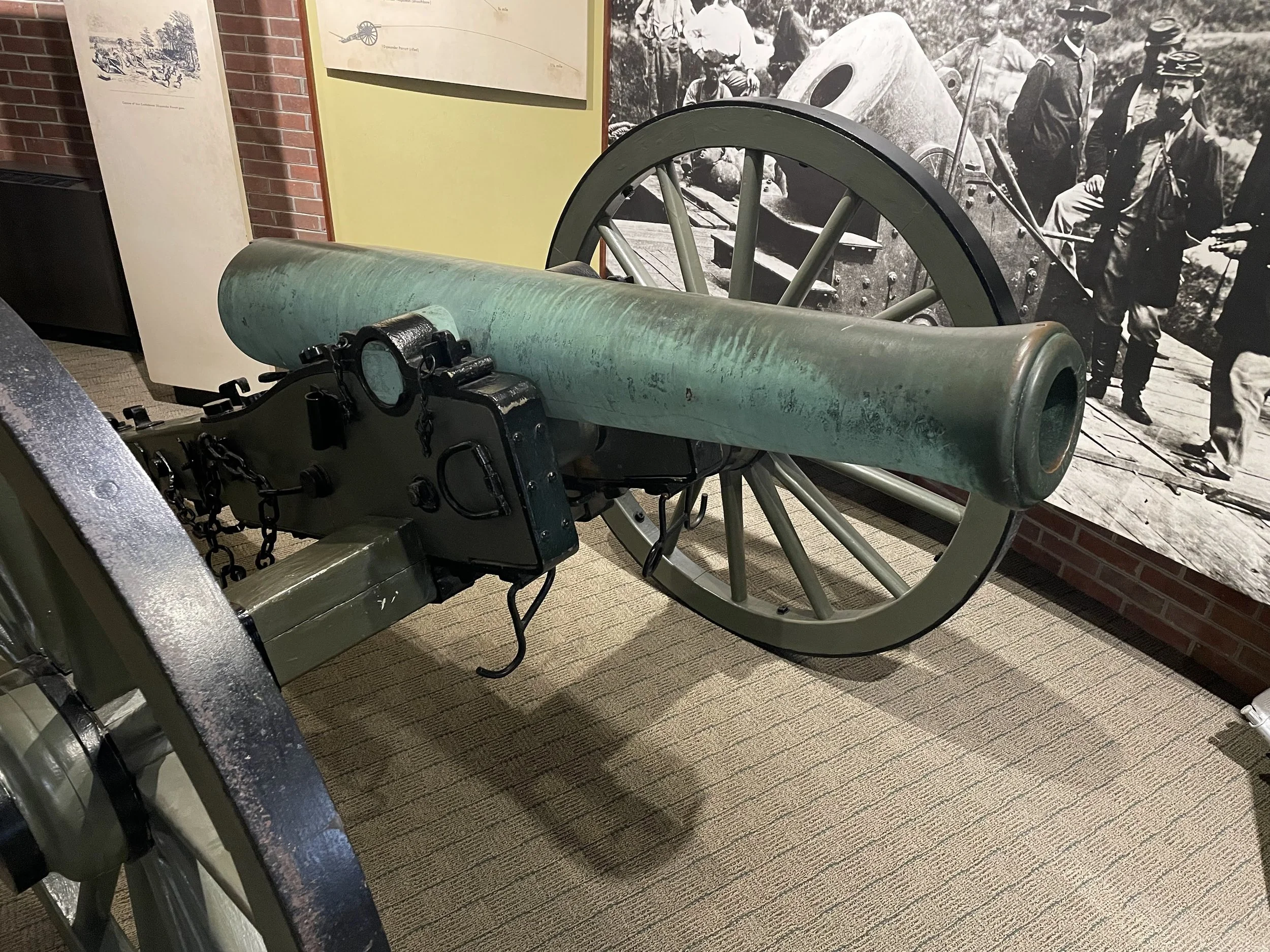12-Pounder Napoleon, Revere Copper Company Number 253, at Petersburg
12-Pounder Napoleon, Revere Number 253, at Petersburg National Battlefield
Revere Copper Company cast four hundred forty-three 12-Pounder Napoleons for the US Army from 1861 to 1863. (The US Army 12-Pounder, Light, Pattern 1857 owed its nickname "Napoleon" to the fact that the American cannon was modeled after the French canon obusier de campagne de 12 livres, modèle 1853.)
This Revere Copper Company Napoleon in the visitor center at Petersburg National Battlefield bears a placard which states: "This 12-Pounder bronze Napoleon tube was captured by the Confederates during the Battle of Reams Station, August 25th, 1864. It was one of four guns lost by Battery B, 1st Rhode Island Light Artillery, when the battery was overrun by General William McRae's North Carolina Brigade. After being captured, the guns were turned on the retreating Federals by sharpshooters in McRae's Brigade who were trained in firing artillery."
Revere Copper Company was founded in 1801 by Paul Revere. Revere is, of course, most remembered in US History as one of the riders who went out the night of April 18-19th, 1775 to raise the alarm that the "Regulars are coming!"
In addition to the 443 Napoleons, it seems that Revere Copper Company cast two 6-Pounders for the US Army. One of those survives - in 1997 it was at Gettysburg - though it has been altered to be a "faux-Napoleon."
The Napoleon in the Petersburg Visitor Center was cast in 1863. It bears the registry number 253, weighed 1,238 pounds as manufactured, and was inspected by Thomas Jackson Rodman.
12-Pounder Napoleon, Revere Number 253, at Petersburg National Battlefield
12-Pounder Napoleon, Revere Number 253, at Petersburg National Battlefield
12-Pounder Napoleon, Revere Number 253, at Petersburg National Battlefield
12-Pounder Napoleon, Revere Number 253, at Petersburg National Battlefield
